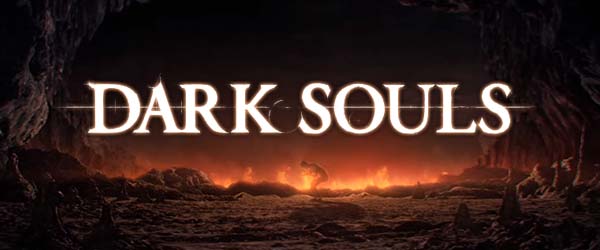
I'm going to do something that I don't normally do, which is to muse a little bit on the theories of other fans. Normally, when I write these lore posts, I write about what I believe - my own personal interpretation. In this case, however, I stumbled upon a video and a blog written by two different users that posit two entirely different (and probably contradictory) fan theories regarding the Souls games. Both theories piqued my interest and lead me down a rabbit hole of my own thought and speculation. So I'm going to summarize the theories that these two have pitched, and also throw in my own thoughts.
But first, let's review the conventional Dark Souls wisdom of the cycles of Fire and Dark. According to conventional wisdom, the dragons and archtrees of the Age of Ancients existed at the genesis of the world. The fire then appeared and ushered in the Age of Fire, but the fire faded, and the Age of Dark began. Lord Gwyn sacrificed himself to rekindle the flame and renew the Age of Fire, but it eventually faded again, leading to an Age of Dark. And the world continued in this endless cycle of the fire
fading and then being rekindled.
An overarching cycle of world-creation?
First, I'll start with a video by The Ashen Hollow, which is about the Cycle of Ages, and which speculates that the Soul of the Lords and Age of Dark ending establishes that the Age of Dark eventually gives way to yet another Age of Ancients. This creates a cycle of cycles, in which not only does the world of Dark Souls repeat Ages of Fire and Ages of Dark, but that once that cycle has run its course, it repeats yet another cycle of world-creation. Dark Souls III, therefore, takes place at the end of an Age of Fire, but it also takes place at the tail end of a cycle of world-creation and destruction. So Dark Souls III is a sequel to the first Dark Souls, and also the first Dark Souls is - in a sense - a sequel to Dark Souls III.
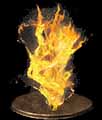
"Soul of the Lords.
One of the twisted souls, steeped in strength.
Use to acquire numerous souls, or transpose to extract it's true strength.
Since Lord Gwyn, the first Lord of Cinder, many exalted lords have linked the First Flame, and it is their very souls that have manifested themselves as defender of the flame."
When the fire inevitably fades, there will be an Age of Dark. This we know. The entire game series, so far, has been about perpetuating this Age of Fire for as long as possible in order to avoid the Age of Dark. Though the first and third game gives us the explicit option to initiate an Age of Dark, it's unclear if that ever actually happens in the canon of the series. And even if it does, the ending of Dark Souls II establishes that either course of action will just result in that chosen age cycling back to the other. We've never actually seen a proper Age of Dark, so we know little of what it would be like. Perhaps the Age of Dark is not permanent. According to the Fire Keeper (if given the Eyes of a Fire Keeper), the Age of Dark is not completely without fire, for there will be little embers dancing in the distance, left to us by past lords.
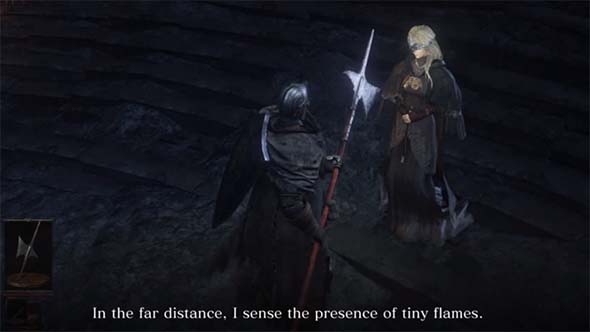
If given the Eyes of a Firekeeper, the Fire Keeper will tell you about the "age without fire".
Her full dialogue is as follows:
"Ashen one, forgive me if this soundeth strange.
The eyes show a world without fire, a vast stretch of darkness.
But 'tis different to what is seen when stripped of vision. In the far distance, I sense the presence of tiny flames. Like precious embers, left to us by past Lords, linkers of the fire.
Could this be what draws me to this strangely enticing darkness?"
This is interesting, as it confusingly establishes that this "world without fire" actually has "tiny flames", and that these tiny flames are left behind by past linkers of fire - past Lords. Now, refer back to the opening of the first Dark Souls:
"In the Age of Ancients the world was unformed, shrouded by fog.
A land of gray crags, Archtrees and Everlasting Dragons.
But then there was Fire and with fire came disparity. Heat and cold, life and death, and of course, light and dark.
Then from the dark, They came, and found the Souls of Lords within the flame."
From the formless dark, there came fire, and in that fire, lie the Souls of Lords. Could these "Souls of Lords" from the first game's opening be the same Soul of Lords that is the amalgamation of past linkers of the flame? Could it be that when the Age of Dark ends, there will once again be a new flame, fueled by the embers left behind by the linkers of fire from a past age? And that new beings will appear from the darkness, find those souls, and claim them?
The end of the world, and a new beginning
So does Dark Souls III take place at the end of the world, or simply at the end of an Age of Fire? It could very well be that the cycle of Ages of Dark and Ages of Fire can continue indefinitely. But I'm not sure if this is the case. Given the entropic nature of the world in the first Dark Souls, it seems reasonable that the cycles themselves would also be entropic.
But before we get into that, it might be worth asking the question: what causes the conclusion of an Age of Dark and forces the beginning of a new Age of Fire? Do the embers that the Fire Keeper references automatically re-ignite the flame on their own and end the Age of Dark? Perhaps the Age of Dark mirrors the Age of Fire in that some champion must sacrifice himself (or herself) to the Kiln of the First Flame in order to re-ignite it.
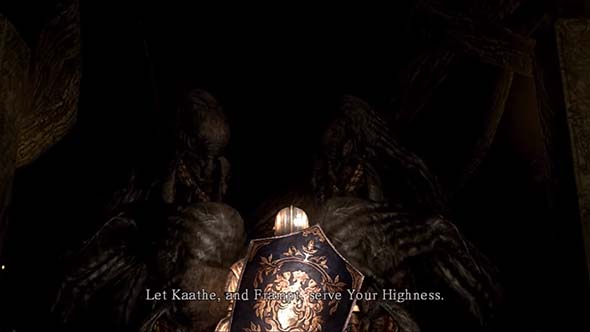
The Age of Dark is triggered by extinguishing the fire. Does it end by re-igniting the flame?
The embers referenced by the Fire Keeper may automatically result in a re-ignition of the fire. But if the Age of Dark is ended by a champion simply re-lighting the flame (presumably by sacrificing his soul to it the same way that it is done to extend the Age of Fire), then these embers wouldn't be necessary, would they? In that case, these tiny flames could be a catalyst for an even bigger world-reforming event: a new genesis.
I only have three real pieces of evidence for this.
First of all is that I do believe that an Age of Dark requires some champion to re-light the flame. This, in fact, may be what happened after Champion Gundyr arrived too late and the fire had already dwindled. He then waits through the Ages of Fire and Ages of Dark, testing the worthiness of new champions who seek to re-kindle the flame. Going through cycles of ages might be how he becomes corrupted by the abyss and why he develops the Puss of Man mutation that is experienced in the opening fight against Iudex Gundyr.
The second piece of evidence is the aforementioned Lord of Souls. This soul is an amalgamation of the souls of all the linkers of flame in ages past. With each linking of the fire, this soul would, presumably, become more powerful. It stands to reason then that the fire would have to be kindled multiple times in order for the soul to reach the strength of a true Lord. This means that more than one kindling would be required. This soul by itself would not be sufficient to restart an Age of Fire after one cycle, but after many cycles, it would be orders of magnitude more powerful than necessary.
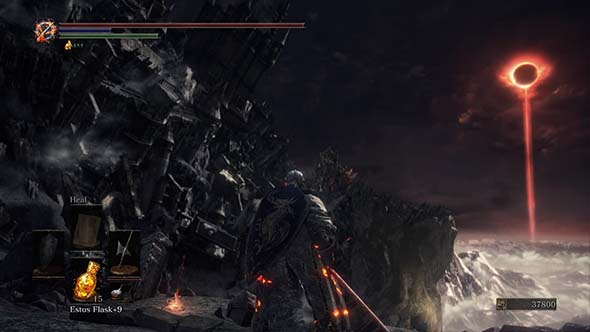
The Kiln of the First Flame shows a world that appears to be collapsing into itself.
The other piece of evidence is the "transitory" nature of the world, and the Kiln of the First Flame itself. In the first Dark Souls, the Kiln seems to be underground where the First Flame was originally discovered, as Frampt appears to take you down into the abyss under the pool of Firelink Shrine. There is a structure built around it that is in ruins, but does not appear to be spatially-warped; though, many pillars do appear to be bent inwards towards the Flame, which suggests that there could be the beginnings of some kind of spatial warping going on. By the time of Dark Souls III, there is a new phenomenon of "transitory lands" that implies that the world itself is being physically re-shaped. This appears to be a new phenomenon in the Dark Souls lore. The Kiln appears to be at the surface now, as the sun is clearly visible, and the world around it seems to be shriveling into itself (similar to a singularity), and is shrouded by fog, just as the world was in the Age of Ancients.
Origins of the Age of Ancients
But, if the Age of Ancients were to begin again following a final Age of Dark, then where would those dragons and archtrees come from? They wouldn't just come from nothing, would they? This is one of the areas where Ashen Hollow's theory is a little weak. He proposes one theory, but I think there may be another, better explanation.
First, Ashen Hollow hypothesizes that the dragons may be derived from serpents, and he references the description of the Covetous Serpent Rings in Dark Souls III, which state that snakes could be (but never became) dragons.
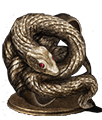
"A gold ring depicting a snake that could have been,but never was, a dragon. Fallen foes are more likely to drop items.
Snakes are known as creatures of great avarice, devouring prey even larger than themselves by swallowing them whole.
If one's shackles are cause for discontent, perhaps it is time for some good old fashioned greed."
This could establish that the Primordial Serpents become the Ancient Dragons, or that they somehow give rise to the Ancient Dragons. A desire to reach the perfection of a dragon could serve as a motivator for these serpents. This seems to be the conclusion that Ashen Hollow came to in his lore video. But then why would Frampt and Kaathe both be seeking to preserve the Ages of Fire and the Ages of Dark (respectively)? The other problem is that the description says that serpents "could have been, but never [were]" a dragon. The past tense writing of this description implies that a serpent may have already lost its opportunity to be a dragon, since the description doesn't say "a snake that could become a dragon". This may disqualify the serpents from consideration.
Another possibility, and one that Ashen Hollow seems to have missed, is that the Path of the Dragon may be a way for the Age of Ancients to come around again. Perhaps Archdragon Peak is tied into the cycles. After all, the Dragon Torso stones appear in all three Dark Souls games, and all make references to members of the Path of the Dragon being able to transform into ancient dragons. Perhaps the Firstborn was following another prophecy: to rebirth the ancient dragons in order to prepare for the inevitable rebirth of the entire world. In fact, later in the game, we can encounter dragons in the Dragon Barracks that have puss of man infections that erupt from parts of their bodies. Is it possible that the puss of man is related to dragons? Could it be that the puss of man is the start of a transformation from human to dragon? If all this is true, then does the player's interference in Archdragon Peak cause a disruption of the rebirth of the world?
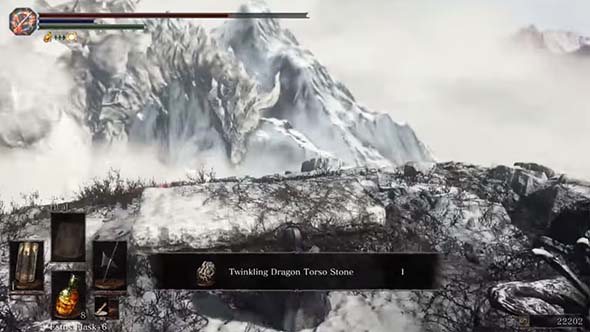
Perhaps the Path of the Dragon is the means by which the Ancient Dragons are reborn.
UPDATE October 12, 2016:
Thinking about the possibility of the Puss of Man potentially being related to (or causing a transformation into) dragons made me come to another thought. If serpents are some kind of imperfect, failed dragon, then it would seem likely that the primordial serpents are also imperfect, failed dragons. And if the puss of man causes a transformation into a dragon, then could it be that the primordial serpents (Frampt and Kaathe) were, at one point, human (or some kind of precursor to humans -- the pygmies)? This could explain why Kaathe wants to bring about an Age of Dark (Age of Man). He (and the other serpents present in the Age of Dark ending of the first game) may see man as their kin. So why would Frampt be working with Gwyn and his disciples? Perhaps Frampt is honoring a pact between man and gods that is referenced by Dark Souls III's Lightning Bolt description.
Unless, of course, there's a linear timeline
All this, of course, only applies if fan theories regarding Demon's Souls, Dark Souls, and Bloodborne being in the same continuity are not correct. Legally, I don't think that From Soft can verify any connection between the games, but they sure did throw enough parallels between the games that it's easy to fall into the trap of speculation.
I recently stumbled upon an essay written by James Wynne at Gamezone.com that was written in April of this year (before Dark Souls III was released). In his essay, James lays out a timeline of events that ties Demon's Souls to Dark Souls to Bloodborne based on the idea that the Old One from Demon's Souls is actually a Great Old One from Bloodborne, that the "colorless fog" from Demon's Souls is the same "gray fog" that envelopes the world at the start of Dark Souls, and that the Archdrake Sect of Dark Souls II began weening humans off of souls and began cleansing and sustaining themselves with the blood of dragons, which lead to the creation of the Healing Church of Yharnham.
Could the Old One and Great Old Ones, and the "Age of the Deep Sea" connect all five Souls-borne games?
James' case is fairly compelling, and Dark Souls III only seems to corroborate this hypothesis. Note that nothing in Dark Souls (that I recall) ever asserts that the Age of Ancients was the beginning, yet Demon's Souls' opening does specifically refer to a beginning. Firelink Shrine in Dark Souls III looks and behaves more similarly to the Nexus of Demon's Souls (and to the Hunter's Dream of Bloodborne) than it does to Firelink in the first Dark Souls (or to Majula in Dark Souls II). Aldrich's Soul makes reference to a vision of an Age of the Deep Sea, and various parallels exist between the symbols of the Cathedral of the Deep and the Caryll runes of Bloodborne. The lore surrounding the Ashen One of Dark Souls III could also be seen as having been foreshadowed to us by Bloodborne's Bone Ash Set, which describes beings granted eternal life by a cremation ceremony that preserves them in ash, and the hat refers to a "certain sin" (the first sin, perhaps?). We also can find old Souls-style armor littering some of the Chalice Dungeons (though we can't acquire or equip any of this armor). I can also see the possibility of the Dragon God of Demon's Souls possibly being an archdragon of Dark Souls, and the Firestorm spell derived from its soul even refers to it as a "Sultan of Chaos" ("Chaos" appearing to be a proper noun).
There's also recurring characters and items. Patches has appeared in all the games except Dark Souls II, with the same face and same voice actor (though he was a spider creature in Bloodborne). And the Moonlight Greatsword has also appeared in all the games. But then again, the Moonlight Greatsword has also appeared in King's Field and even in Armored Core, yet I don't see anyone trying to tie those games into the Souls continuity.
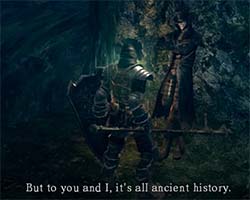
Marvelous Chester claims to be from the distant future, and is dressed like a Bloodborne hunter.
Of course, since the first Dark Souls, we've also had the character of Marvelous Chester. He showed up in the Artorias of the Abyss DLC (which included some explicit time travel) and claimed that he comes from the distant future (a future beyond the cycles of Ages of Fire and Dark?). He also is dressed very similarly to a hunter from Bloodborne, uses an evasive fighting style consisting of quick dodges instead of rolls, uses a crossbow as his primary weapon, and doesn't drop humanity or succumb to the Dark Hand. Could From have been planning Bloodborne as a sequel to Dark Souls from the beginning, and they placed Chester as a seed and hint of what was to come? Or perhaps this is just how people from Carim dress and fight?
The biggest hole that I see in all this is that the dragons of Dark Souls aren't Lovecraftian Old Ones, so I don't see how the worship of dragon blood would turn into a worship of cosmic Great One blood, since the two are completely different types of creatures with completely different origins. That being said, the fact that characters like Seath and Oceiros were consumed with re-creating dragons could have lead to impure versions of dragons being created. Over time, these impurities could have resulted in the grotesque monstrosities of Bloodborne. Looking at, say Ebrietas, we can see that she has a pair of legs that resemble Seath's legs, and she has little tentacle and tendril appendages that are similar to the growths coming out of Oceiros' back. And all three characters are variations of a similar deathly white or gray color, and all three have wings.
Ebrietas doe share some aesthetic similarities to both Seath and Oceiros.
Personally, I had always thought that if Demon's Souls and Dark Souls were related, then it seemed more intuitive to me for Dark Souls to be a prequel to Demon's Souls. In this hypothesis, Demon's Souls would take place in the distant future of Dark Souls, during the end of a Golden Age of Man. I've never really put much serious thought into this idea though, so I don't have any evidence [currently] to back that up. It remains a simple blind assertion, and you should take it with a grain of salt. Though, the idea of the Colorless Fog of Demon's Souls being the same fog that enshrouded Dark Souls' Age of Ancients certainly seems more compelling.
It's also very possible (and likely) that this could all be innocent coincidence. It might just be that all three games(Demon's Souls, Dark Souls, and Bloodborne) took heavy inspirations from Lovecraft, and so all three have some Lovecraftian imagery and designs and philosophies. That seems to be the most likely scenario, but From Soft just couldn't resist throwing in these cryptic hints.
UPDATE March 28, 2017:
While killing time waiting for The Ringed City to install, I was going through some Dark Souls lore stuff, and came across the following video by Youtuber Silver Mont about this very same topic. Silver Mont makes many of the same points that I discussed here, and also has some unique insights that I hadn't considered.
One particularly interesting idea is that Dark Souls is a sequel to the "bad ending" of Demon's Souls, in which the player character decides to kill the Maiden In Black and allow the Old One and the Colorless Fog to consume the world. Bloodborne then would be an alternative sequel to Demon's Souls' "good ending", in which the character lulls the Old One to sleep, separating humanity from the source of demons and magic.
Youtuber
Silver Mont has a video about this very topic that discusses many of the same points.
UPDATE: 25 January 2018:
Youtube's pre-eminent Soulsborne bard, VaatiVidya, recently released a video of cut content from Bloodborne that seems to include a clip of Father Gascoigne speaking the word "Umbassa". Unless Vaati is making some kind of joke to troll his audience (which isn't characteristic of his style), this would seem to confirm that at some point in Bloodborne's development, FROM had -- at the very least -- toyed with the idea of Bloodborne being within the same fictional continuity as Demon's Souls. Unless this was all a troll by FROM,
and this utterance wouldn't be any more significant than the recurring references to Patches and the Moonlight Greatsword.
If this cut content is legit, then this could imply that the Old One of Demon's Souls is, in fact, a Great Old One from Bloodborne, and that Bloodborne probably takes place in a distant future in which humanity lost its connection to the Soul Arts, discovered the Old Ones in the Chalice dungeons, and then began experiments on Blood Ministration in order to rediscover the Soul Arts.
The Chalice dungeons may, in fact, be the ruins of Boletaria, which could explain why we find fluted armor in some dungeons.
Youtube Soulsborne bard
VaatiVidya posted this video of cut content in which Gascoigne says "Umbassa"
UPDATE: 12 March 2018:
VaatiVidya is back with a follow-up video,
outlining the possibility of a linear timeline connecting Demon's Souls to Dark Souls to Bloodborne. His outline is very similar to James' proposal on Gamezone a couple years ago -- in fact, he specifically cites Jame's Gamezone post in the video's description.
One notable thing that Vaati adds to James' idea comes from Dark Souls III's DLC (which had yet to even be announced when James wrote his piece). Vaati's idea is that Bloodborne may take place, not simply in the future of Dark Souls, but rather in the painted world created by the painter in Ariandel, using the blood of the Dark Soul as a pigment. Hence the title, Bloodborne.
While the idea of all three games sharing a continuity is compelling, I do have three major issues specifically with Vaati's idea of Bloodborne being a painted world. One: would such a painted world exist within an entire cosmos? If not, then Bloodborne's celestial Old Ones would not seem to be a possibility within the context of a painted world. Second: Marvelous Chester would not only have to have been plucked out of the future, but also plucked out of the painted world (twice!). This is certainly possible, as we've seen that characters in Dark Souls can enter painted worlds, so it should hypothetically work the other way too. However, if he came from a painted world, then he should have no knowledge of Oolacile or Artorias, since they wouldn't be part of the painting's history or mythology. Lastly: if the entire world of Dark Souls were to collapse back into the Kiln of the First Flame, then would that also include the destruction of the painting(s) and any world(s) that exist therein?
I hope that Vaati's next video is dedicated to refutations of the idea of a shared continuity -- in the interests of fairness. If all three games are related, I'm much more keen on Silver Mont's idea of Dark Souls and Bloodborne being sequels to Demon's Souls respective endings.
VaatiVidya's follow-up video explores the idea of connected timelines more thoroughly.
So what do you believe?
So what do you think? Do you believe in Ashen Hollow's idea that there is an overarching cycle of world-creation that will eventually lead to another Age of Ancients? Do you think that Demon's Souls represents Dark Souls' distant past (a past before even the Age of Ancients)? Is Bloodborne in the distant future of Dark Souls (long after that cycle of Fire and Dark has ended)? Is the Old One from Demon's Souls really a Great Old One from Bloodborne? Will you stick to the conventional Dark Souls wisdom that the Age of Ancients was the genesis of the world, and that the rest of its history consists entirely of Ages of Fire and Ages of Dark looping endlessly? Or maybe you believe something else entirely? Perhaps the DLC of Dark Souls III will answer these questions. Or perhaps, it will leave us with even more...